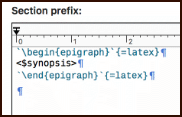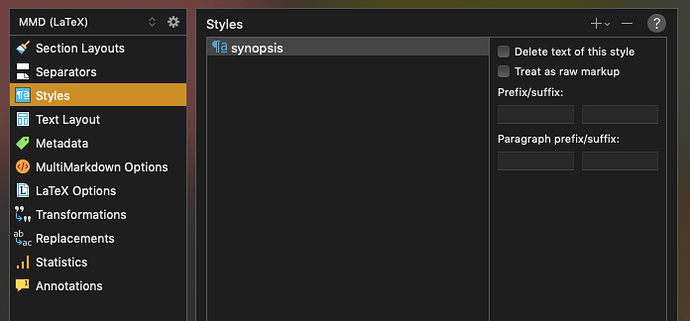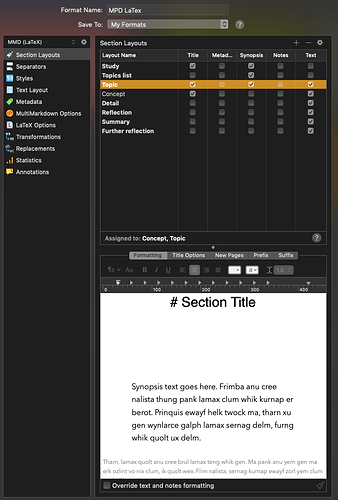So something I do when encountering a repeated type of formatting that I want in a number of places is to decide whether or not it is important to express as a type of thing, of itself, or whether it is okay to combine several different semantic types together.
If this is an epigraph for instance, then maybe the block quote environment is all right. Although I’d still say it’s a bit semantically inaccurate to say an epigraph and a block quote are the same thing, if the document does not use block quotes at all ever, then coopting the semantics for this purpose is fine. Where I start to really wonder about it though is when we have block quotes being used for an indent and metaphorical screaming, with the whole paragraph being marked as strongly emphatic!  At that point, it feels a bit like we’re painting formatting onto text merely for its effect, and my mind starts itching for the analogous component to a style. With LaTeX, that could be, for a style prefix/suffix:
At that point, it feels a bit like we’re painting formatting onto text merely for its effect, and my mind starts itching for the analogous component to a style. With LaTeX, that could be, for a style prefix/suffix:
`\begin{epigraph}`{=latex}
...
`\end{epigraph}`{=latex}
(In case you are unfamiliar, the paraphernalia around the LaTeX syntax is a signal to MMD that the contents of this back-tick code span should be passed through verbatim to LaTeX, and deleted without a trace for other forms of conversion. In short it’s a way to extend MMD, and with Scrivener using styles to generate these means extending MMD without any more visual impact than standard markup).
Now you’re declaring the text precisely for what it is. If things like that are to be indented and printed in black weight at 22pt, that’s something LaTeX can say about the presentation of this text.
Of course that also neatly dodges any issues with trying to get a paragraph style to correctly apply inline formatting via prefix/suffix, too. But as to that, you’ll have much better luck if there is a character style handling the inline stuff, and a paragraph style handling the block level stuff—so two styles on this one paragraph.
Another approach, if these are all one paragraph in length and no more, is to handle the output more precisely, using the Layout’s Prefix tab (note the Place prefix after title checkbox, at the bottom) instead of the pre-fab Synopsis checkbox:
 [size=80][/size]
[size=80][/size]
Since you control the output, you don’t have to work around carriage returns being automatically inserted and so forth (though it does still mean your synopses must be carefully composed). Again though, I would strongly prefer the following:
 [size=80][/size]
[size=80][/size]
For further reading on these techniques:


 At that point, it feels a bit like we’re painting formatting onto text merely for its effect, and my mind starts itching for the analogous component to a
At that point, it feels a bit like we’re painting formatting onto text merely for its effect, and my mind starts itching for the analogous component to a  [size=80][/size]
[size=80][/size] [size=80][/size]
[size=80][/size]